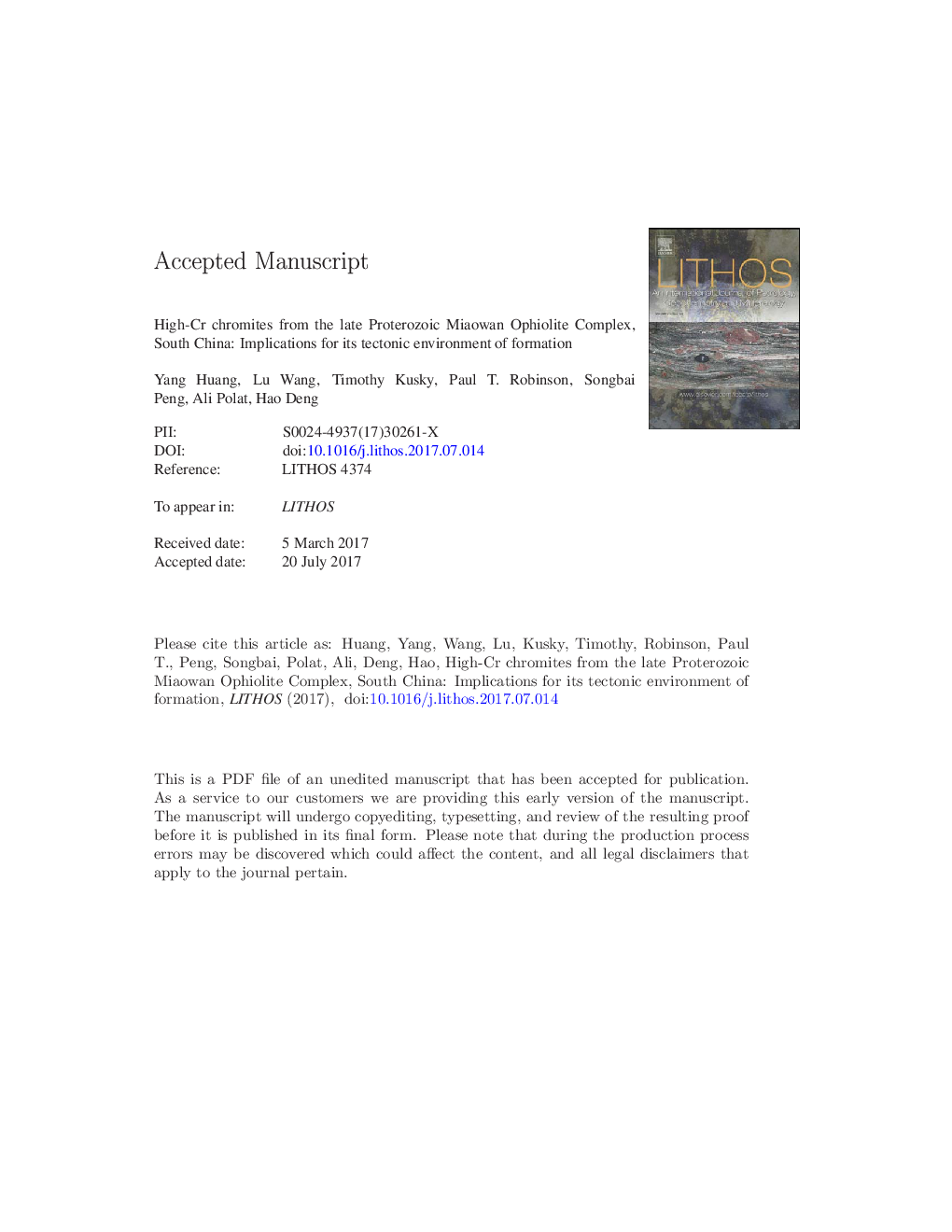| کد مقاله | کد نشریه | سال انتشار | مقاله انگلیسی | نسخه تمام متن |
|---|---|---|---|---|
| 5784000 | 1638628 | 2017 | 78 صفحه PDF | دانلود رایگان |
عنوان انگلیسی مقاله ISI
High-Cr chromites from the Late Proterozoic Miaowan Ophiolite Complex, South China: Implications for its tectonic environment of formation
ترجمه فارسی عنوان
کرومیت های بالا کروم از مجتمع افیولیت میائوون پسین پروتروزیوئیک، جنوب چین: پیامدهای محیط زیست تکتونیکی تشکیل آن
دانلود مقاله + سفارش ترجمه
دانلود مقاله ISI انگلیسی
رایگان برای ایرانیان
موضوعات مرتبط
مهندسی و علوم پایه
علوم زمین و سیارات
ژئوشیمی و پترولوژی
چکیده انگلیسی
Chromian-spinel (chromite) is a common mineral in ophiolitic rocks and the study of chromite from the mantle sections of ophiolites can help shed light on their petrogenetic origin and tectonic setting. The Proterozoic Miaowan Ophiolite Complex (MOC) in the Yangtze Craton contains disseminated chromite grains in mantle harzburgites and podiform chromitites associated with serpentinised dunites. Most chromite grains display compositional zoning due to alteration but the fresh cores preserve primary igneous compositions. Podiform chromitites in the MOC dunites and harzburgites are compositionally similar to typical ophiolitic chromitites elsewhere. The chromite grains contain numerous inclusions of clinopyroxene and amphibole with minor amounts of olivine, chlorite, base-metal sulphides (BMS) and platinum-group minerals (PGM). The abundant hydrous mineral inclusions within the chromite grains suggest a hydrous mantle source. Core compositions of chromite grains indicate that the parental melts of the chromitites were similar to typical boninitic melts in a forearc setting. However, chromite grains in the harzburgites show mixed MORB and arc signatures. Thus, the mineralogy and geochemistry of the MOC peridotites suggest that the chromitites in the MOC formed in a forearc tectonic setting during reaction between boninitic melts and MORB-type harzburgite in a supra-subduction zone (SSZ) mantle wedge.
ناشر
Database: Elsevier - ScienceDirect (ساینس دایرکت)
Journal: Lithos - Volumes 288â289, September 2017, Pages 35-54
Journal: Lithos - Volumes 288â289, September 2017, Pages 35-54
نویسندگان
Yang Huang, Lu Wang, Timothy Kusky, Paul T. Robinson, Songbai Peng, Ali Polat, Hao Deng,
